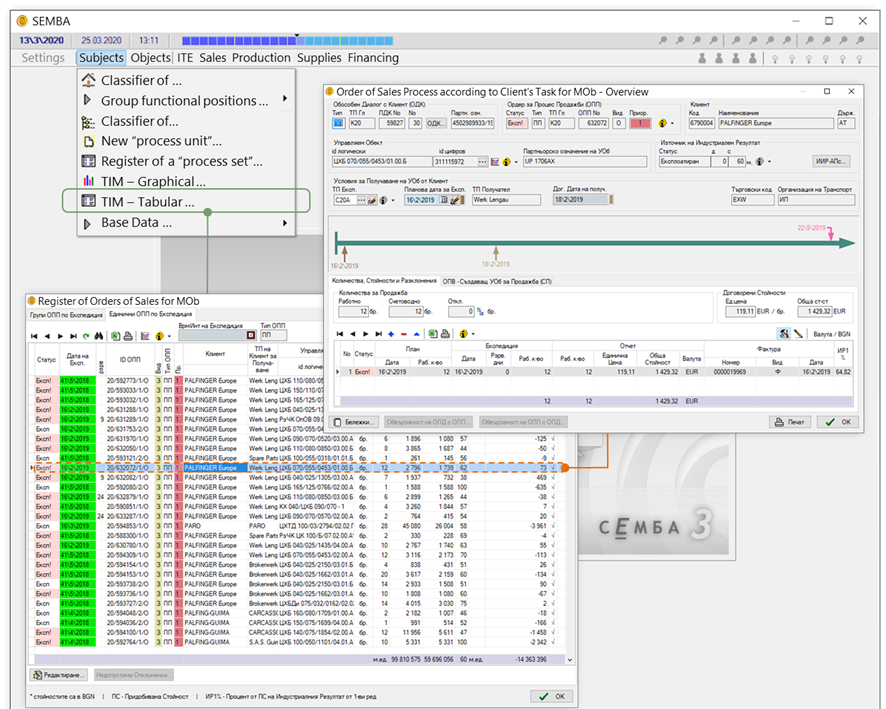
March 8th, 2024
Article: User Experience - The Overlooked Aspect of Enterprise Software
Summary
This month, we wanted to write about a topic that resonates with professionals across many industries, the user experience (UX) of enterprise software.
To many, the first idea that comes to mind from enterprise software is a clumsy user interface (UI) filled with buttons, overloading the user with information, and minimal workflow guidance. Despite their UIs’ clumsiness, these software products have been, and continue to be, widely adopted. The simple reason for this is that while consumer applications aim to give their user an entertaining experience regardless of their background, enterprise software’s focus is on the efficiency needed within a professional setting. This aim for efficiency, professionalism, and requirements feeds into the mindset that serious jobs require serious software that requires special skills to operate.
However, as technology capabilities advance, enterprise software design can be rethought to enable maximal efficiency of users, allowing for them to unlock its full potential. Designed properly, software can become more than just a necessary tool, it can multiply a workforce’s efficiency.
Subscribe for future deep dives in:
- Realtime Reporting & Process Visualisation for M&A
- AI-Powered UI’s and Their Impact on Private Finance
- Other cool topics
From Engineer to Practitioner Designed Software
Over the recent years, companies have started to understand how critical user experience is to get the desired effectiveness and efficiency not only to operate successfully but also to keep employees engaged. Interestingly, the key to creating that experience isn’t making the software more entertaining but making it more intelligent and intuitive to use. Software of old, developed by isolated engineering teams, often resulted in unintuitive interfaces and workflows.

Picture source: Wikipedia
Combining deep domain expertise and intelligent technologies with the understanding of end user perception, companies can create software that’s simultaneously intuitive, efficient, and effective. Put simply, software crafted with deep practitioner expertise in target users’ workflows and processes will inevitably offer better usability compared to that developed by others.
We all know that AI can do wonders to user experience so let’s save that for a later post and focus on the role of domain knowledge and interaction when creating a working enterprise solution, and approach it from a comparison between simple and complex transactions.
Today, consumer apps, for example those for online shopping, are designed to be as straightforward as possible. The user’s buying process is linear with only a single workflow. Compare this to enterprise workflows, such as private financial transactions, which are multifaceted processes requiring coordination between internal teams and external counterparties. These transactions always involve multiple approval processes, rapid exchange of data between various counterparties spanning over several months, and many other specialised tasks. In these complex situations, it is critical that the workflow of the software echoes reality, else it will cause delays affecting multiple users and at worst costing billions to companies.
When the software is less than intuitive to the professional user, like any other software, it frustrates them as they need to put additional effort on top of their core skills to handle the application that’s only a medium to their actual jobs. In private finance, sub-optimal user experience leads quickly to users abandoning software solutions, as stretched project timelines, missed information, and inefficient collaboration is simply not acceptable.
In summary, as workflows become more complex and more specialised, the only way to ensure efficiency and satisfaction by the end user is to build based on strong domain experience.
Reducing Solution Complexity with Predictability and Simplicity
Creating enterprise software that is both intuitive and aligns with users' mental models of their optimal workflows requires ways to reduce its complexity without losing any valuable information. Tesler’s Law, also known as The Law of Conservation of Complexity, states that for any system there is a certain amount of complexity that cannot be reduced, removed or hidden. Instead, it must be solved either through technical solutions or user interaction.
In the context of private finance, this means creating software that is as simple and predictable as possible enabling users to easily find relevant information, execute tasks seamlessly, and correct errors without getting lost in the interface or overwhelmed by complex interdependencies of tasks.
Challenges arise when simplicity is misinterpreted as minimalism, resulting in flawed features that offer little value to users. Simplification should require providing just enough functionality for users to accomplish their tasks without running into obstacles. This methodology prioritises outcomes over features. The excellence of certain consumer applications such as Uber or Airbnb lies in their ability to take the load off of users and assist them in making decisions. Enterprise solutions shouldn't be no different and strive for solving their users’ problems with the simplest possible solutions.
How to Identify Excellent UX in Enterprise Software
As you seek out new solutions for your team that are professional, clear, and simple to use, we've summarised the following guidelines from the article to help you more easily separate the wheat from the chaff:
- Seek for solutions that are built by practitioners: The software should use workflows, concepts, and language that are familiar to you and present them in a natural and logical order.
- Prioritise solutions that include intelligent workflows: The software should anticipate your next steps after completing a task, eliminating the need to remember information across different sections. Necessary information should be readily visible and easily accessible when required.
- Identify solutions that aim for reduced complexity: The software should consistently guide you through your tasks and communicate the most important information to get the job done.
Do you want to be the first one to read the latest monthly kicker.cloud insights? Click here to subscribe to our mailing list.
Authors: Eljas Pajamies, Matthew Jones